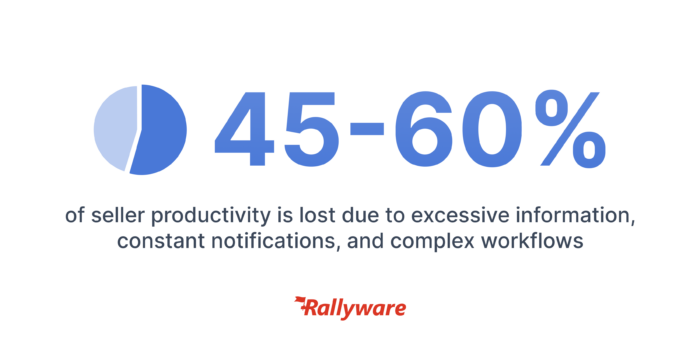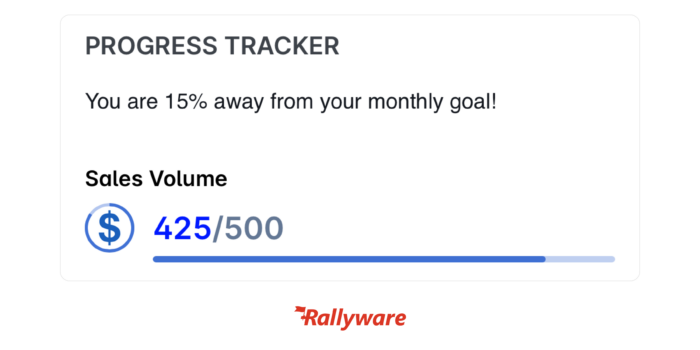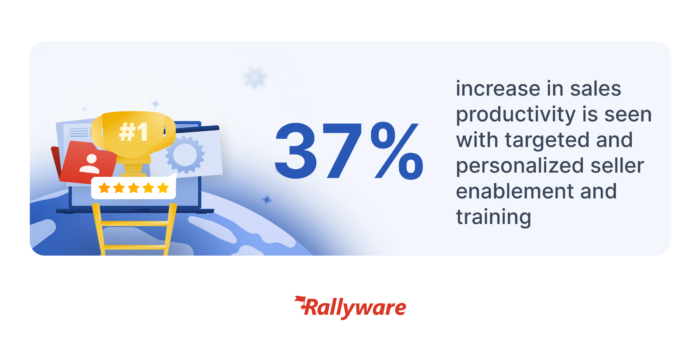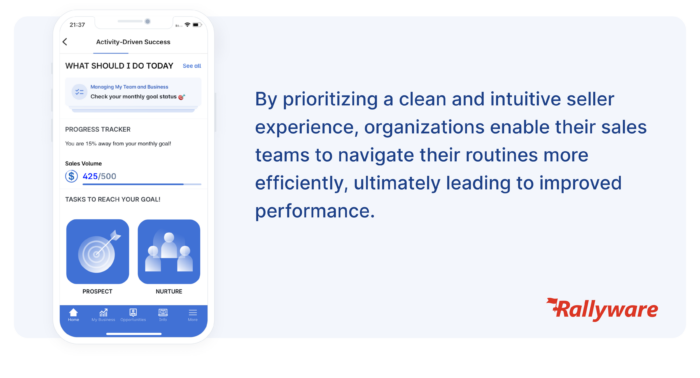The Digital Divide: Over 50% of Direct Sellers Falling Behind in Transformation
Field Sales Enablement: 5 Steps to Simplify the Seller Journey
A recent report indicates that 45% of sales professionals are overwhelmed by intricate processes and an excess of tools. Moreover, more than one in four sales reps say that if their company reduced the number of tools they use, it would make them more efficient, allowing them to spend more time selling and building meaningful customer relations.
This phenomenon, known as the paradox of choice, illustrates how offering too many options can paralyze decision-making, ultimately stifling sales success. The pressing challenge for organizations is to recognize that simplifying the seller journey is not merely beneficial; it is essential for maintaining a competitive edge today.
The cost of complexity: A wake-up call
The ramifications of complexity extend beyond mere frustration; they translate directly into lost revenue. According to a study by Gartner, 20% of stalled and lost deals are attributed to convoluted internal policies and procedures. When sales reps spend their time navigating unnecessary complexities, they miss opportunities to engage with customers and close deals.
Organizations that simplify and streamline their processes often witness a significant turnaround. For example, one technology company with a large distributed sales force added over $670,000 in revenue within just a few months after streamlining and simplifying its field sales enablement. This not only boosted revenue but also enhanced team morale. Such success stories serve as a powerful wake-up call for businesses still entrenched in complexities.
To avoid the pitfalls of complexity and drive significant improvements in performance, organizations must reassess their seller experience and refine their field sales enablement stacks. Here are five actionable steps to streamline the seller journey and enhance overall effectiveness:
1. Cut the noise
Sellers frequently find themselves inundated with a barrage of notifications and convoluted workflows, leading to significant distractions that can reduce overall productivity by 45-60%. To combat this issue, organizations must prioritize cutting unnecessary alerts, streamlining communications and workflows.

It’s essential to recognize that sellers cannot afford to waste precious time sifting through irrelevant information or non relevant tasks and assignments. Adopting a targeted communication strategy that emphasizes essential updates while minimizing distractions is critical for revenue growth. By refining their communication channels now, companies can prevent burnout and reduce attrition among their field representatives.
2. Create visual progress maps
Visualizing progress is crucial for simplifying how sellers understand their performance, goals, and next steps. By implementing visual progress maps, organizations provide sellers with a clear snapshot of their current standing relative to their goals. This clarity allows sellers to quickly identify the most impactful actions they can take to achieve and even exceed their targets.

Don’t let complexity stifle your sellers’ potential by forcing them to navigate a convoluted multi-step process just to determine their sales performance, assess their progress toward goals, and understand their eligibility for bonuses. Many organizations unnecessarily complicate this critical seller experience, making it harder for their teams to succeed.
3. Unlearn traditional training
Traditional training methods are increasingly ineffective in today’s dynamic market. The emergence of performance-driven micro-learning—short, focused training sessions tailored to each individual based on their performance—has proven to significantly enhance knowledge retention and engagement. Organizations that implement these targeted and personalized training approaches report an average 37% increase in sales productivity.

If your team continues to rely on outdated training formats with low engagement, they risk falling significantly behind competitors who are quickly adapting to the evolving market landscape. As companies embrace innovative learning strategies, your sellers may find themselves ill-equipped to tackle emerging challenges, leading to lost opportunities and diminished sales.
If your team continues to rely on outdated training formats with low engagement, they risk falling significantly behind competitors who are quickly adapting to the evolving market landscape. Embracing innovative learning strategies is crucial for equipping your sellers to tackle emerging challenges and maximizing sales enablement impact.
4. Automate routine tasks
Manual tasks can significantly drain sellers’ energy and time. By automating routine processes, organizations can free up valuable hours each month, enabling sellers to focus on high-value activities. This shift allows sales representatives to redirect their efforts toward customer engagement and that critical human touch, whether it’s selling a pair of running shoes in a retail store, a skincare product by a direct selling rep, or an insurance policy by an agent while empathizing with a client while finding just the right product.
If your team is still burdened by manual processes, now is the time to embrace automation. Streamlining these tasks not only enhances efficiency but also boosts productivity and seller morale, creating a more motivated and engaged sales team ready to drive results.
5. Remove rather than add – simplicity of seller experience
In their efforts to address diverse seller needs, many organizations fall into the trap of adding more features and tools to their field sales enablement stacks. However, research shows that a simplified experience enhances seller productivity and engagement. By prioritizing a clean and intuitive seller experience, organizations enable their sales teams to navigate their routines more efficiently, ultimately leading to improved performance.

It’s time to shift away from increasing complexity. Now is the moment to make the strategic decision to eliminate unnecessary tools and features. Your sellers will appreciate the streamlined experience, and you are likely to see a corresponding increase in sales as a result. As leading interface designers at Apple have demonstrated, less is more; a minimalist approach can lead to greater usability and enhanced performance.
Simplify to thrive
In an era where every moment counts, the simplicity of your sales processes can be the differentiator between success and stagnation. Organizations that prioritize streamlined workflows not only empower their sellers but also enhance overall business agility. As competitors leverage simplicity to gain an edge, the risk of being left behind grows ever larger.
Transforming your sales enablement strategy isn’t just a trend; it’s a necessity for fostering a motivated and high-performing sales team. By embracing these steps toward simplicity, you position your organization to adapt swiftly to market changes, boost seller morale, and ultimately drive greater sales success.
Ready to experience the benefits of a simplified sales journey? See Rallyware in action and discover how you can elevate your field sales enablement efforts today.
News and Insights on Workforce Training & Engagement
We’re among top-notch eLearning and business engagement platforms recognized for effective training and talent development, helping to empower distributed workforces
Subscribe
